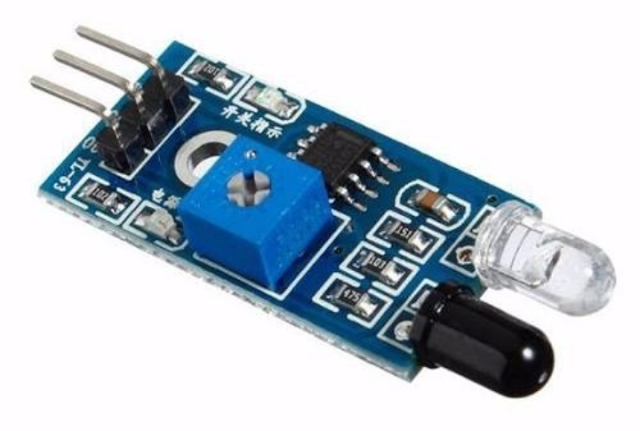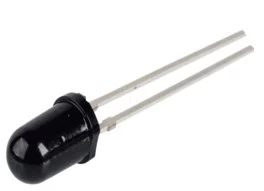IR Sensor
An IR sensor is an electronic device that emits and/or
detects infrared radiation produced in order to detect some parts of the
environs or surrounding. In other words it is an electronic device which is
used to sense heat & objects. It works by sensing IR radiations and
variation of heat to detect some part of the surrounding. So they can be
classified as a thermal infrared sensor which detects the change in heat from
its nearby objects and as photo IR sensor which uses a photo diode to sense IR
radiations.
Infrared transmitter
An infrared transmitter is a light emitting diode
(LED) which emits infrared radiations. These IR radiations are not visible to
the human eye unlike simple LEDs which emits visible light. The picture of a
typical Infrared LED is shown below. IR transmitter consumes about 3 to 5 mA of
current when operated at the nominal voltage (5V) and can be modulated to
produce particular frequencies of infrared light.
Infrared receivers also called as "infrared sensors", are
designed to detect infrared radiations from IR transmitters. IR receivers come in the form of
photodiodes or phototransistors and are different from normal photo diodes as
they detect only infrared radiation. When used in a combination mode with an IR
transmitter, its wavelength should match with that of the transmitter.
The infrared portion in the electromagnetic spectrum
is divided into three regions having different wavelengths (λ). |
| An Infrared sensor (photo IR sensor) |
Infrared transmitter
An infrared transmitter is a light emitting diode
(LED) which emits infrared radiations. These IR radiations are not visible to
the human eye unlike simple LEDs which emits visible light. The picture of a
typical Infrared LED is shown below. IR transmitter consumes about 3 to 5 mA of
current when operated at the nominal voltage (5V) and can be modulated to
produce particular frequencies of infrared light. |
| An infrared light emitting diode (infrared transmitter) |
Infrared receiver
Infrared receivers also called as "infrared sensors", are
designed to detect infrared radiations from IR transmitters. IR receivers come in the form of
photodiodes or phototransistors and are different from normal photo diodes as
they detect only infrared radiation. When used in a combination mode with an IR
transmitter, its wavelength should match with that of the transmitter. |
| An infrared receiver |
· Near infrared region : 700 nm ≤ λ ≤ 1400 nm used
in typical IR sensors, fiber optic
- Mid infrared region : 1400 nm ≤ λ ≤ 3000 nm used in heat sensing
- Far infrared region : 3000 nm ≤ λ ≤ 1 mm used in thermal imaging
The physics behind
infrared sensors is governed by three laws:
1. Planck’s radiation law: Every object at a
temperature (T) not equal to 0K emits radiation. All the surrounding
objects generate different form of thermal radiation.
2. Stephan Boltzmann law: At all
wavelengths, the total energy emitted by a black body is proportional to the
fourth power of the absolute temperature.
3. Wein’s Displacement Law: Objects of
different temperature emit spectra that peak at different wavelengths. These
wavelengths are inversely proportional to the temperature.
Related:Types of infrared sensorsCircuit and working principle of an infrared sensor
Ref: